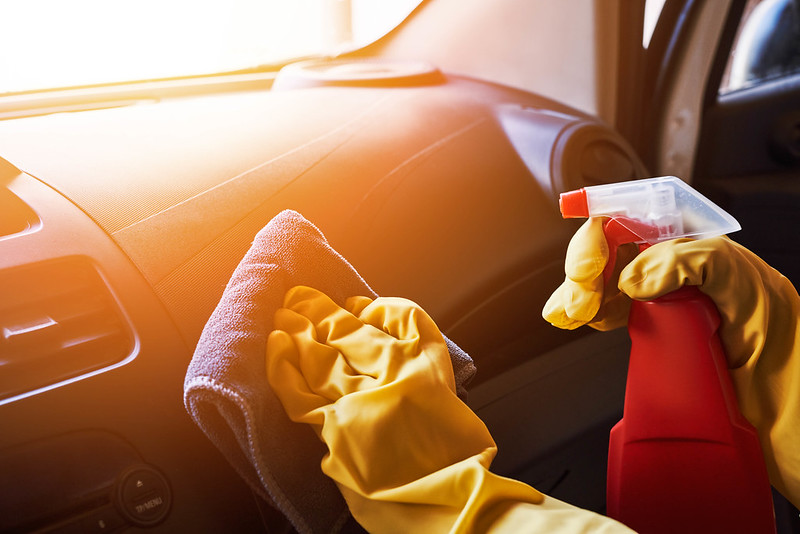Whether you’re cleaning your car’s wheel rims, soft leather interior, or tinted windshield, you’ll almost certainly go for a rag. Microfiber technology has kept up with advances in automotive detailing, offering professional and do-it-yourself detailers alike with a durable, scratch-free cloth that can handle almost any vehicle cleaning task. Rags may now be used by nearly anybody to wash a car!
Using rags to clean your car
Rags are the most popular vehicle wash cloths because of their powerful but gentle cleaning activity. They’re particularly useful for removing stains or grime without scraping or harming the material underneath.
This is a synthetic knit fiber made up of extremely tiny, soft, yet robust threads. The fibers are thick and tiny. As a result, they can penetrate into even the smallest cracks to remove dirt particles from any surface. As a consequence, the cloth is durable, absorbent, and machine washable. This cleaning cloth is capable of removing almost any dirt or grime off your vehicle. Most importantly, it will do so without inflicting any damage to the surface. It’s lint-free and won’t leave swirl marks on your vehicle when you dry it at home after a thorough wash and detail cycle. Rags are used only by specialists for all automobile cleaning processes. It is the most delicate but powerful cleaning cloth on the market today.
Some Pointers for Using Rags to Wash a Vehicle
We suggest that you remove any tags from new rags before using them. This will help to reduce the risk of damage to your car’s paint work. The tag might produce microscopic abrasion scars on your car’s chassis or windshield if it is pressed too hard against it. These abrasion marks can detract from the appearance of your vehicle.
Also, make sure you keep towels according to whether or not they’ve been used before. Never wipe windows or leather upholstery using a towel that has been used for heavy-duty cleaning, such as removing caked-on oil and debris around the engine block. Separately store fresh, brand-new towels so you always know where to get clean towels.
Finally, make sure you understand how to properly care for your rags. Not only do you need to keep new and old rags separate, but you also need to know how to clean them properly. Trust us when we say that mastering a few tips will save you time and money in the long run.
Washing your car using microfiber
Step 1: Decide where you want to wash your automobile. To soak your automobile, wash it, and rinse it, you’ll need access to an abundant supply of water.
If at all feasible, choose a shaded location. The car wash soap may dry onto your paint before you have a chance to rinse it off if it is exposed to direct sunlight. If you don’t have access to a shaded spot, wash small sections of your automobile at a time to avoid drying concerns.
Step 2: Raise the arms of your wipers. Lift the wiper arms upright to have access to all parts of the windshield and clean them completely.
Step 3: Gather your cleaning products. Fill your bucket halfway with water, ideally warm but chilly will do.
Follow the directions on the soap package to add the vehicle wash soap.To make the water sudsy, stir it.While you’re preparing, soak a microfiber wash towel in your bucket of water.
Step 4: Using water, rinse the outside to remove any loose dirt. Spray the whole vehicle, including the windows and wheels, with water, giving specific attention to places where dirt has accumulated.
Cleaning your car
Step 1: Using your soapy rag, wipe each panel. Begin at the top and work your way down the automobile.Save the panels that are severely filthy until last.
Step 2: Completely wash one panel at a time. If you’re parked in full sunshine or the weather is hot, wash small sections at a time to avoid the soap drying to the paint.
Step 3: For a larger surface area, use an open hand. To cover the maximum surface area in the quickest period of time, use a broad, open hand in the fabric.The dirt will be taken up by the rag’s fibers rather than spread on the surface.With the cloth, clean the wiper blades and arms. Don’t let go of the arms quite yet.
Step 4: Make sure you’re rinsing your rag on a frequent basis. Rinse your towel in soapy water whenever you wipe an area that is particularly unclean.Before starting, remove any gritty parts from the fabric that you can feel.If your automobile is really filthy, you may need to use many cloths to complete the task.
Step 5: Last but not least, wash your wheels. On your wheels, dirt, filth, and brake dust may accumulate quickly. So, you don’t contaminate your wash water with a lot of abrasive debris that may harm your paint, wash them last.
Step 6: Thoroughly rinse your automobile with clean water. Rinse your automobile from top to bottom with a hose or buckets of clean water.
Start washing the roof and windows, rinsing until the rinse water is clear of suds.Thoroughly rinse each panel. When your paint dries, any leftover soap might leave residue or streaks.
Final words
While you may wash your automobile using the same sort of rags, you can also purchase a separate towel for each component of your car. They come in a variety of colors, sizes, and cuts. This manner, you may use the same cloth for all of your cleaning needs.
When washing a car with rags, keep in mind that you may also use rags on the inside, not only the outside. In any case, it’s a good idea to familiarize yourself with the many varieties of rags and their applications. As a result, when the time comes, you’ll be much more prepared to wash a car using rags.








